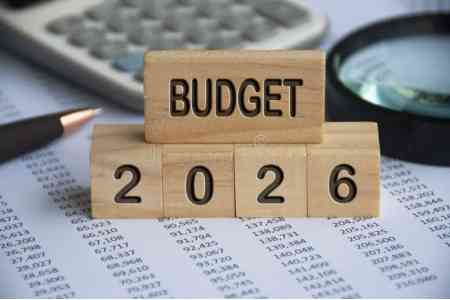


ArmInfo.Armenia's GDP growth in 2026 is projected to be 5.4%, with a deflator of 3%, and a deficit of 4.5%. "The budget is clearly an investment in human capital," as stated by Finance Minister Vahe Hovhannisyan during a regular meeting on September 25, when presenting the country's draft state budget for the upcoming year.
According to him, the GDP in 2026 is projected to be 11 trillion 933 billion drams. According to the draft, state treasury revenues are expected to reach 3 trillion 091 billion drams, of this amount 2 trillion 972 billion 850 million drams will come from tax revenues and state duties, 20.5 billion drams from official grants, and 97.7 billion drams from other revenues. Community revenues in Armenia in 2026 are estimated to be 347.3 billion drams (including official grants received from the state treasury).
"As a result of the implementation of measures to improve tax administration, combat the shadow economy, and enhance tax policy, it is expected that the tax/GDP ratio will improve by 0.4 percentage points compared to the expected figure," the head of the Ministry of Finance stated, emphasizing that this year this indicator is expected to increase by 1 percentage point compared to the 2024 figure. State budget expenditures are expected to total 3 trillion 628 billion drams, with current expenditures amounting to 2 trillion 924 billion drams and 704 billion drams allocated to capital expenditures (or 5.9% of GDP, compared to 6.6% in the 2025 state budget).
The deficit will reach 537.5 billion drams, or 4.5% of the GDP (compared to 609 billion drams, or 5.5%, in 2025). Of this amount, 271.3 billion drams will come from external sources to cover the deficit, with the remaining 266.2 billion drams from domestic sources. Vahe Hovhannisyan noted that in the medium term, the authorities hope to reach 2.8% of the GDP (in 2028). As a result, the government debt/GDP ratio will increase from 50.7% to 53.5% by the end of 2026, with an increase of 810.9 billion drams in absolute terms, reaching a total of 6 trillion 384.7 billion drams.
Regarding the government's priorities, Hovhannisyan noted that, along with other programs, the implementation of the Universal Health Insurance system, which the authorities refrained from implementing in 2025 due to a lack of funds, is planned to begin in 2026. Housing support for forcibly displaced families from Nagorno-Karabakh (55 billion drams) will continue, as will cashback programs for pensioners on non-cash payments (20 billion drams) and support for IT companies. Additionally, 3 billion drams will be allocated for the airline support program.
A new program for assessing family vulnerability will be launched, which was piloted in two regions this year. 4.9 billion drams will be allocated for the Akademic City construction program and 66.2 billion drams will be allocated for road repairs, transport facilities, and tunnel and bridge maintenance. 30.6 billion drams of credit resources will be allocated for the North-South construction program (Ashtarak-Talin - 34 km, Kajaran-Agarak - 32 km), and construction of the Kajaran tunnel and tracks will begin. Construction of the Bargushat tunnel and the Sisian-Kajaran road will also begin in 2026. Authorities also promise to implement reservoir construction programs. 2 billion drams will be allocated for the participatory budgeting program, up from 1 billion drams in 2025.
Allocations to the Ministry of Education, Science, Culture and Sports will increase from 3.3% to 3.5% in 2026, and to the Ministry of Health from the current 1.5% to 1.8%. The draft budget will be submitted to parliament by October 1.